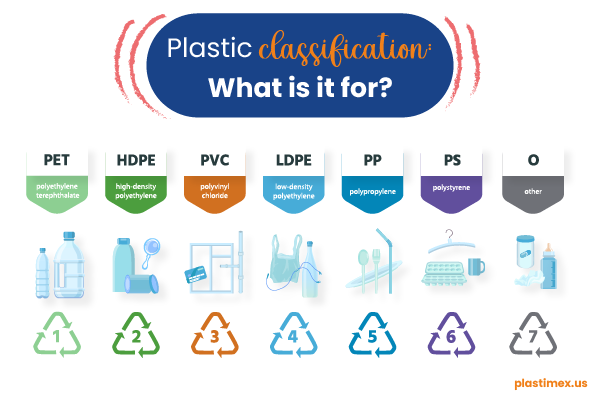Currently, plastic classification has become a central topic for those looking to contribute to a more sustainable future. At Plastimex, we deeply understand that proper classification is an essential step in reducing the negative impact of this material on our planet. We invite you to explore in our blog how it works and why it’s so important.
What is plastic and what is it used for?
Plastic is a synthetic material formed from petroleum-derived polymers. Its versatility, durability, and relatively low cost have allowed it to become one of the most widely used materials worldwide. From food and beverage packaging to electronic products, toys, and medical devices, plastic is found in virtually every aspect of our daily lives.
Despite its numerous advantages, plastic also presents significant environmental challenges. One of the most prominent issues is its slow decomposition, as plastics can take many years to fully break down, leading to the accumulation of waste in oceans, soils, and other ecosystems.
This is where the need for plastic classification comes in. Classification is the process of categorizing different types of plastics based on their characteristics, to facilitate their proper handling and subsequent recycling. Therefore, by classifying plastic, more specific measures can be taken to recycle, reuse, or dispose of each type of plastic correctly, thus reducing its environmental impact.
Plastic identification codes, also known as recycling codes, are a numerical system that identifies the types of plastic used in products. These codes are generally found at the bottom of products and are represented by a number surrounded by a triangle of arrows. These numbers range from 1 to 7, and each represents a type of plastic:
- PET (Polyethylene Terephthalate)
- HDPE (High-Density Polyethylene)
- PVC (Polyvinyl Chloride)
- LDPE (Low-Density Polyethylene)
- PP (Polypropylene)
- PS (Polystyrene)
- Other (less common plastics and blends)
Plastic classification offers several significant benefits:
- Waste reduction: Classification enables more effective management of plastic waste, thereby reducing the amount of plastic that ends up in landfills and nature.
- Efficiency in recycling: By classifying plastics, the recycling process is streamlined, as each type of plastic requires specific treatment. This increases recycling success rates and reduces the need for new resources.
- Resource conservation: Recycling and reusing plastics reduce the demand for virgin raw materials, contributing to the conservation of natural resources.
Without a doubt, plastic classification is a crucial link in the chain of efforts towards a better future. At Plastimex, as plastic packaging manufacturers committed to environmental care, we recognize that classification is not just an industrial process, but a way to positively contribute to the health of our planet. By encouraging our customers and the community at large to participate in plastic recycling and reuse, we are working together to create a cleaner and more sustainable world.

